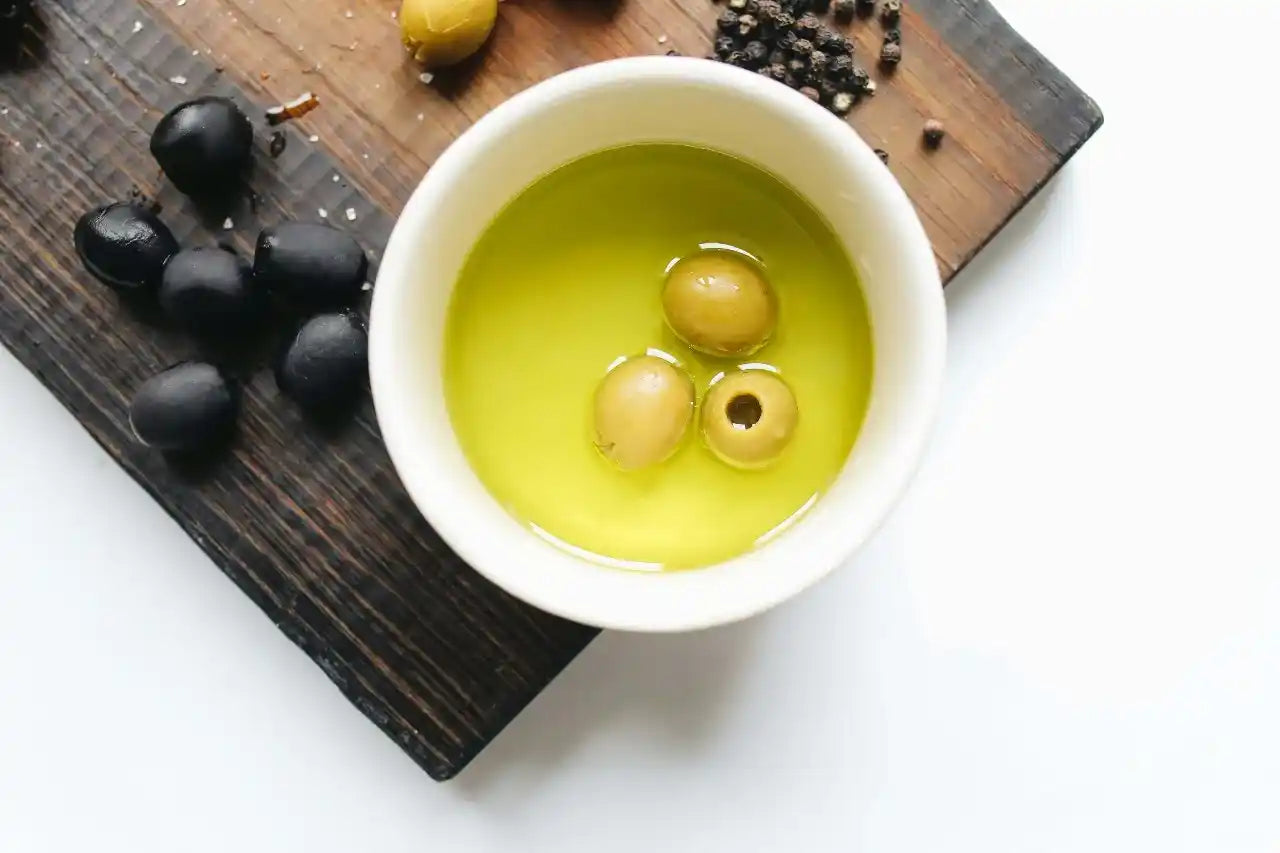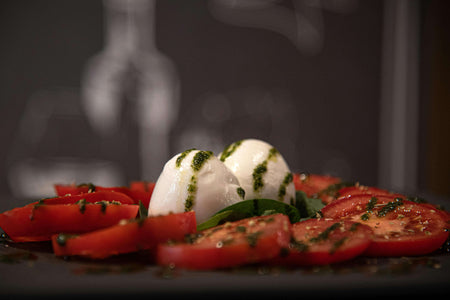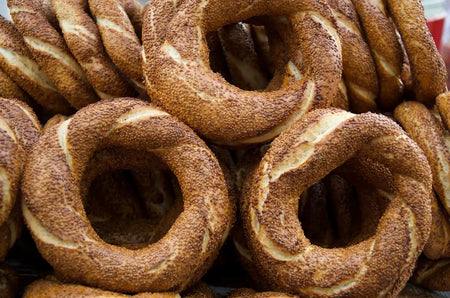Cemil, company.com

Is Black Olives Good for Weight Loss?
When it comes to weight loss, finding the right balance of nutritious and satisfying foods is essential. Black olives, often enjoyed for their rich flavor and versatility, have garnered attention in the health and wellness community. But are they actually good for weight loss? Let's dive into the nutritional benefits and potential drawbacks of including black olives in a weight-loss diet.
Nutritional Profile of Black Olives
Black olives are a good source of various nutrients, including healthy fats, vitamins, and minerals. Here’s a short summary of their nutritional information:
- Healthy Fats: Black olives are rich in monounsaturated fats, which are known to support heart health and may help reduce bad cholesterol levels.
- Fiber: Olives contain dietary fiber, which aids in digestion and can help you feel fuller for longer.
- Vitamins and Minerals: They are a good source of vitamin E, iron, copper, and calcium, contributing to overall health.
Benefits of Black Olives for Weight Loss
- Satiety and Reduced Cravings: The combination of healthy fats and fiber in black olives can promote feelings of fullness, reducing the likelihood of overeating or indulging in unhealthy snacks.
- Nutrient Density: Despite being calorie-dense, black olives offer a range of essential nutrients, making them a nutritious addition to a balanced diet.
- Low Glycemic Index: Olives have a low glycemic index, meaning they have a minimal impact on blood sugar levels. This can help with weight management and controlling cravings.
Ways to Include Black Olives in a Weight-Loss Diet
- Salads: Add a handful of sliced black olives to your salads for a flavorful and satisfying boost.
- Snacking: Enjoy black olives as a healthy snack alternative to processed foods.
- Cooking: Use black olives in your cooking, such as in pasta dishes, casseroles, or as a topping for pizza.
- Tapenade: Make a tapenade with black olives, capers, and olive oil to use as a spread on whole-grain crackers or as a dip for vegetables.
Olives Storage Information
To keep black olives fresh and maintain their flavor and nutritional value, proper storage is key. Here’s how to store black olives effectively:
How to Store Black Olives
-
In the Refrigerator:
Unopened Canned or Jarred Olives: Store in a cool, dry place like a pantry or cupboard. They can last for up to 2 years or until the expiration date on the can or jar.
Opened Canned or Jarred Olives: Transfer the olives to a clean, airtight container if they’re not already in one. Keep them submerged in their brine and store them in the refrigerator. They should be used within 1-2 weeks for the best quality.
-
In the Freezer:
Freezing: While not common, black olives can be frozen if you have a large quantity. Place them in a freezer-safe container or bag, and they can be stored for up to 6 months. Note that freezing can change the texture of the olives, so they might be best used in cooked dishes after thawing.
-
Homemade Brine:
If you’re making homemade black olives, store them in a jar filled with a solution of water, vinegar, and a little salt. Keep the jar in the refrigerator and use the olives within a few weeks. -
Avoid Contamination:
Always use clean utensils when handling olives to avoid introducing bacteria. Keeping the olives in their brine and sealing the container tightly can also help maintain their quality.
How to Tell if Black Olives Have Gone Bad
- Smell: If the olives have an off or sour smell, they might be spoiled.
- Appearance: Look for any signs of mold or discoloration. The presence of any unusual spots or changes in color can indicate spoilage.
- Texture: Olives that become mushy or slimy may not be good to eat.
By following these storage tips, you can enjoy black olives as part of your weight-loss diet and keep them fresh for longer periods.
Potential Drawbacks
While black olives have numerous health benefits, it's important to consume them in moderation. They can be high in sodium, especially if they are canned or jarred with added salt. Excessive sodium intake can lead to water retention and bloating, which might counteract weight-loss efforts.

Black olives can be a beneficial addition to a weight-loss diet due to their healthy fats, fiber, and nutrient density. They can help promote satiety and reduce cravings, making it easier to stick to a calorie-controlled eating plan. However, it's crucial to consume them in moderation and be mindful of their sodium content. By incorporating black olives wisely into your diet, you can enjoy their rich flavor and health benefits without compromising your weight-loss goals.
Related articles
Top 10 Tulum Cheese Dishes: Quick and Easy Cooking Guide
Discover 10 delicious recipes featuring Tulum cheese, including grilled vegetable salad, stuffed peppers, tacos, frittata, roasted beet salad, flatbread, stuffed mushrooms, pasta, omelet, and pizza. Each dish showcases the rich, tangy flavor of Tulum cheese, adding a unique twist to your meals. Elevate your cooking with these simple yet flavorful recipes, and for the finest selection of Tulum cheese, visit Orontes Grocery today!
The Irresistible Turkish Bagel Recipe
Simit, an iconic Turkish street food, holds a special place in the hearts of food enthusiasts. These circular bread rings, coated in sesame seeds and baked to perfection, are more than just a snack; they are a culinary delight reflecting the rich flavors of Turkish cuisine. Let's dive into the world of Simit and discover how to make this irresistible Turkish bagel at home. Ingredients You'll Need: 4 cups all-purpose flour 1 tablespoon instant yeast 1 teaspoon salt 1 tablespoon sugar 1 1/2 cups lukewarm water 1/4 cup olive oil 1 egg white (for egg wash) Sesame seeds (for coating) Instructions: Prepare the Dough: In a large mixing bowl, combine the lukewarm water, sugar, and yeast. Let it sit for 5-10 minutes until frothy. Add the olive oil, salt, and half of the flour. Mix well. Knead the Dough: Gradually add the remaining flour and knead the dough on a floured surface for about 8-10 minutes until it's smooth and elastic. Place the dough in a greased bowl, cover it with a kitchen towel, and let it rise in a warm place for about 1 hour or until doubled in size. Shape the Simit: After the dough has risen, punch it down and divide it into 12 equal portions. Roll each portion into a long rope, about 18 inches long, and form it into a circle, overlapping the ends slightly. Press the ends together to seal. Prepare the Coating: In a shallow bowl, beat the egg white. In another bowl, place the sesame seeds. Coat the Simit: Dip each shaped bagel into the egg white, making sure to coat it evenly. Then dip it into the sesame seeds, covering the entire surface with seeds. Second Rise: Place the coated bagels on a baking sheet lined with parchment paper. Cover them with a kitchen towel and let them rise for another 30 minutes. Preheat and Bake: Preheat your oven to 400°F (200°C). Bake the risen bagels for 20-25 minutes or until golden brown and crispy. Enjoy Your Homemade Simit: Once baked, let the Simit cool on a wire rack before serving. These Turkish bagels are best enjoyed fresh and can be served with cheese, olives, jam, or simply on their own as a delightful snack. Tips for Perfect Simit Flour Matters: Using high-quality flour will make a significant difference in the texture of your Simit. Bread flour can also be used for a chewier texture. Proper Kneading: Ensure you knead the dough thoroughly to develop the gluten, which gives Simit its characteristic chewiness. Uniform Size: To ensure even baking, try to keep each Simit the same size and thickness. Crispy Crust: If you prefer a crispier crust, increase the baking time slightly but keep an eye on them to prevent burning. Storing Simit: If you have leftovers, store them in an airtight container to keep them fresh. You can also freeze them and reheat in the oven when needed. Benefits of Turkish Bagel (Simit) Rich in Fiber: Simit, made from flour and sesame seeds, supports digestion and a healthy gut. Source of Protein: Provides essential protein for muscle repair and overall body function. Healthy Fats: Contains olive oil and sesame seeds, offering heart-healthy fats. Cultural Experience: Enjoy Simit as a part of Turkish street food culture, connecting with Istanbul's vibrant culinary tradition. Versatile Snack: Perfect for breakfast or as a snack, enjoyed with cheese, olives, or jam. Homemade Goodness: Making Simit at home ensures freshness and quality ingredients, adding warmth to your table. Experience the Taste of Turkey: Making Simit at home is not just about baking bread; it's about experiencing the flavors and culture of Turkey in every bite. Whether you enjoy them for breakfast, as a snack, or with tea or coffee, Simit brings a taste of the bustling streets of Istanbul right to your kitchen. Share these delicious treats with family and friends and savor the joy of homemade Turkish bagels. Afiyet olsun! (Enjoy your meal!)








